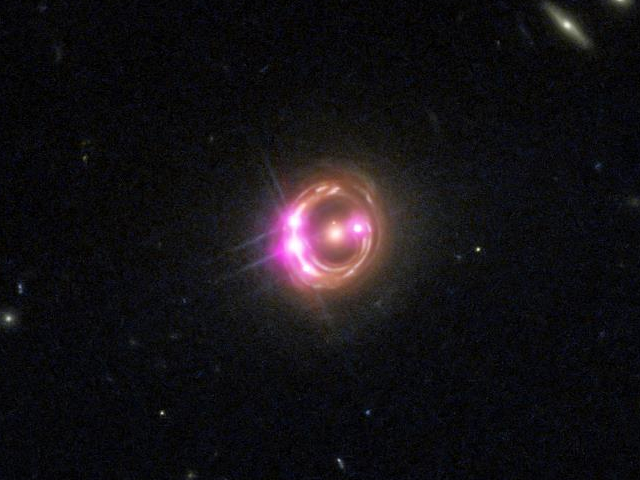6-billion-year-old quasar spinning nearly as fast as physically possible
Ars Technica » Scientific Method 2014-03-05

Supermassive black holes are powerful engines, pumping matter and energy into their environments. Despite their size and influence, they are also relatively small, making detailed observations a major challenge. For that reason, most of the data we have on them involves tracking the matter swirling around the black hole rather than the properties of the black hole itself.
Astronomers have now used gravitational magnification to measure the rotation rate of a supermassive black hole in a very distant galaxy. From four separate images of the same black hole, R. C. Reis, M. T. Reynolds, J. M. Miller, and D. J. Walton found it was spinning nearly as fast as possible. That likely means it was spun up by a small number of mergers with other black holes rather than a gradual increase from eating smaller amounts of mass.
This marks the first measurement of black hole rotation outside the local Universe, and it was only possible because the light from this black hole was magnified by a galaxy lying serendipitously between it and the Milky Way. However, the fortuitous alignment means it will be difficult to replicate the method for most other black holes.
Read 11 remaining paragraphs | Comments